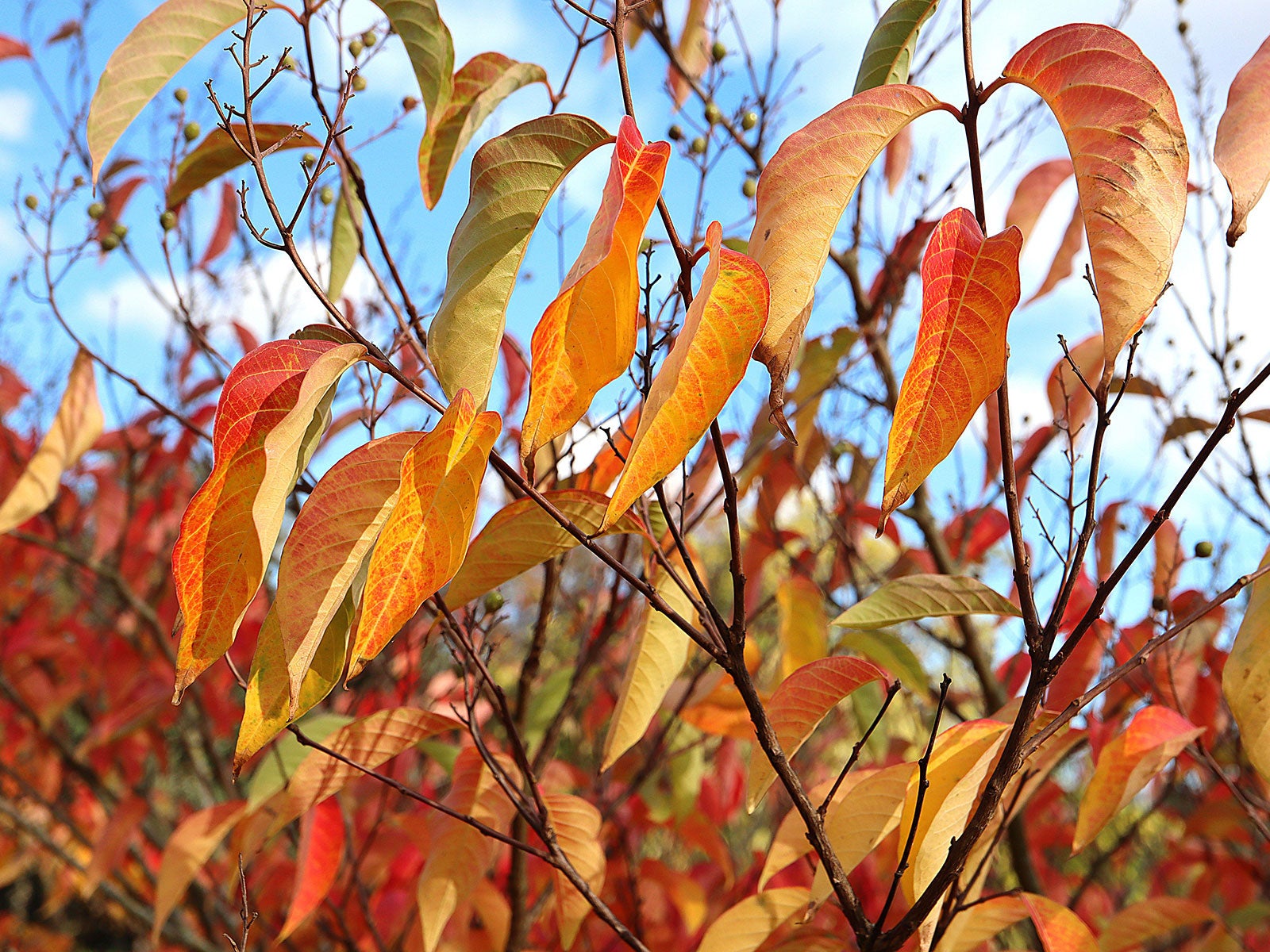Grow Lagerstroemia Fauriei: Best Care For Japanese Crepe Myrtle


A great tree for multi-season interest, Lagerstroemia fauriei adds a decorative flourish from summer to winter. The Japanese crepe myrtle, as it is also known, is a deciduous tree with gorgeous fall color. This crepe myrtle also develops beautiful summer blossoms and attractive peeling red and brown bark.
Its flowers, foliage and appealing bark contrasts make this crepe myrtle a stunning year-round tree to grow. Charming yet low maintenance, its smaller size means it is perfect for limited spaces, as well as Oriental themed plots. Here's how to get the best from this highly ornamental tree.
Quick Lagerstroemia Fauriei Facts:
- Botanical name: Lagerstroemia subcostata var. fauriei, Lagerstroemia fauriei
- Height: 20-30 feet (6-9m)
- Spread: 15-19 feet (4.5-5.7m)
- Sun exposure: Full sun, at least six hours a day
- Soil requirements: Tolerant of most well-draining soils
- Hardiness zones: USDA 6b-9b
- When to plant: Plant in springtime or fall
Japanese Crepe Myrtle Care
With its bright and showy blossoms, the Japanese crepe myrtle tree looks like a prima donna plant. Luckily, this crepe myrtle variety (also called Japanese crape myrtle, depending on where you live) requires little maintenance. However, if you plant and care for Lagerstroemia fauriei appropriately, it has a better chance of flourishing and flowering year after year.
Light Conditions
Japanese myrtle trees need a site with at least six hours of sunshine a day. If you plant these summer-flowering trees in the shade, you are not likely to see the abundant flowers that make it so special.
Water and Fertilizer
Although Lagerstroemia fauriei trees are drought tolerant, they do best with regular irrigation. When irrigating trees, just take care not to overwater. These trees don't require fertilizer to thrive.
Temperature & Humidity
Lagerstroemia trees thrive in a wide range of hardiness zones, from 6 through 10. They do not do well in cold winter climates, but they’re tolerant plants and accept some humidity.
Soil & Compost
A Lagerstroemia fauriei will accept clay, sandy or loamy soil, as long as the drainage is excellent. However, they do best with rich soil that has a high organic component.
Gardening tips, videos, info and more delivered right to your inbox!
Sign up for the Gardening Know How newsletter today and receive a free copy of our e-book "How to Grow Delicious Tomatoes".
How to Plant a Lagerstroemia Fauriei
When it comes time to plant your new Japanese crepe myrtle, select an open and sunny site. Check your planting site has well-drained soil to best nurture these naturally drought-tolerant trees. Also, while these are good trees for small gardens, make sure you check the site is large enough for the mature size of your Lagerstroemia fauriei.
Pruning Japanese Crepe Myrtle
No pruning is required to get these trees to flower. You might wish to remove the lower branches in order to expose the lovely form and color of the trunk. You can also prune out any suckers at the base of the tree, and take off dead and damaged branches.
It is possible to create problems if you don't prune crepe myrtle correctly. This often happens when trying to reduce the size of the tree or keep it a particular height. It’s good to cut away dead stems, but other than that, don’t cut off the top of the tree to reduce its height. Instead, select a species that grows to the appropriate desired height for your space.
Propagating Lagerstroemia Fauriei
You can propagate crepe myrtle trees from seed, although it takes a while to develop decent-sized plants. Japanese crepe myrtle trees produce fruit that appear as green seed pods. These become dark and dry when they mature. Generally, seeds germinate well without any stratification pretreatment. It is also possible to propagate these crepe myrtle trees from cuttings.
Problems, Pests & Diseases
If you don’t like dealing with pests and diseases in your ornamental trees, Lagerstroemia fauriei is a good choice. There are few crepe myrtle problems to worry about, although aphids sometimes snack on new growth. This does not put the tree's life in danger, but it can cause an unattractive sooty mold to develop on the leaves. You should treat tree aphids with natural predators and horticultural sprays. Fortunately, unlike other crepe myrtles, these trees are very resistant to powdery mildew.
Best Lagerstroemia Fauriei Varieties
There are numerous pretty varieties of Japanese crepe myrtle. The cultivar 'Fantasy' grows to 50ft (15m) tall, and produces extremely showy white flowers. Consider 'Kiowa' if you have a very small garden. This bright white-flowering, multi-stemmed tree stops at around 24ft (7m) tall, and has a similar spread.

Teo Spengler is a master gardener and a docent at the San Francisco Botanical Garden, where she hosts public tours. She has studied horticulture and written about nature, trees, plants, and gardening for more than two decades. Her extended family includes some 30 houseplants and hundreds of outdoor plants, including 250 trees, which are her main passion. Spengler currently splits her life between San Francisco and the French Basque Country, though she was raised in Alaska, giving her experience of gardening in a range of climates.
-
 Looking For Plants To Give You The Soft And Fuzzies? Try These 5 Fuzzy Leaf Plant Options
Looking For Plants To Give You The Soft And Fuzzies? Try These 5 Fuzzy Leaf Plant OptionsLovers of texture, drama, silver foliage and tactile plants will adore these special sensory garden additions. These fuzzy leaf plant options will leave you all aglow
By Susan Albert
-
 Get Ready For A Summer Of Hummers! Grow These Full Sun Hummingbird Plants and Flowers
Get Ready For A Summer Of Hummers! Grow These Full Sun Hummingbird Plants and FlowersIf you’re lucky enough to enjoy a sunny backyard, make sure you are maxing out on your pollinator opportunities and grow these full sun hummingbird plants and flowers
By Tonya Barnett